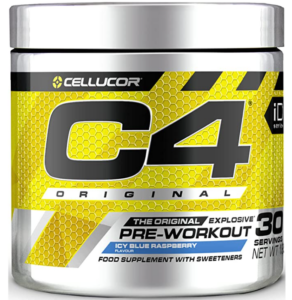The best weightlifting belts can be extremely effective at providing support to your lower back whilst you squat and deadlift, but finding the right one for you can be a little tricky at times.
Fortunately, we’ve compiled a list of our top picks based on features, price, and reviews to help you hit new personal bests during some of your core movements in the gym.
Whether you’re after something relatively inexpensive, like this belt from Dark Iron Fitness, or you’re searching for something slightly more premium, like this Eleiko Olympic Weightlifting Belt, we’ve got you covered right here.
Also, if you’re looking for a way to store your belt, then check out our list of the best gym bags available now.
Best Weightlifting Belt
Advertisement
Best Weightlifting Belt – Inzer Forever Lever Belt 10mm
Brand: Inzer | Thickness: 10mm | Material: Leather | Closure Type: Lever Buckle
Advertisement
Inzer is one of the top manufacturers of weightlifting belts around, especially in the powerlifting scene, and its Forever Belt is a strong contender for one of the best belts around.
Being made from leather, it should have a long lifespan to fulfill all your weightlifting needs, and the lever buckle means it’s, not only durable, but easy to take on and off between sets.
The belt also includes high-density nylon stitching which is a smart choice as it should provide excellent strength and corrosion resistance.
The belt has a competition-approved thickness of 10mm so would suit those competing, but is also noticeably lightweight due to the nylon stitching meaning it will also suit beginners not necessarily used to wearing a heavy belt.
Best Leather Weightlifting Belt – ProFitness Workout Belt
Brand: ProFitness | Thickness: 4″ | Material: Leather | Closure Type: Lever Buckle
Advertisement
The ProFitness Workout Belt looks to be a highly supportive and durable bit of kit thanks to its premium leather construction, plus its double hook lock-in.
On top of that, ProFitness boasts its belt is highly comfortable and shouldn’t slip or ‘ride down’ as you lift heavy during movements like squats and deadlifts.
On the whole, we feel the ProFitness Workout Belt is well worth considering if you’re after a genuine leather weightlifting accessory.
Best Weightlifting Belt On A Budget – Dark Iron Fitness Leather Belt

Brand: Dark Iron Fitness | Thickness: 4mm | Material: Leather | Closure Type: Buckle, Hook, and Loop
Advertisement
For a more affordable option, the Dark Iron Fitness Leather Belt provides a strong alternative for beginners and those with a limited budget.
This belt boasts it’s suitable for men and women squatting anything up to 600lbs, so should also satisfy more experienced lifters if they were to purchase this item.
In terms of materials, it’s made from one strip of leather which should resist wear, and has been made to be slip-resistant to support you when you reach the peak of any heavy lift.
At only 4mm thick, the belt is lightweight and compact which is not only perfect for storage but again helps beginners who are not used to working out with a heavy belt fastened tightly around their core.
Best Nylon Weightlifting Belt – Schiek Sports Model 2004
Brand: Schiek | Thickness: 3/4mm | Material: Nylon | Closure Type: Buckle, Hook, and Loop
Advertisement
We believe The Schiek weightlifting belt is a good option for both keen athletes and more casual lifters who prefer nylon over leather.
The benefits of choosing nylon include its flexibility compared to its leather counterpart, helping to prevent the belt from digging into your ribs, and its lightness.
The Schiek comes with an added lumbar insert which helps tackle the issue of rigidity which many of the leather belts benefit from, so it should keep you supported as you deadlift in your top gym shoes.
One of the most intriguing aspects of this belt though is its shape as the sides are contoured. This means the front and back are thicker than the sides which provide extra comfort and stability in crucial areas when deadlifting or squatting.
Best Weightlifting Belt For CrossFit – Element 26 Self-Locking Weightlifting Belt
Brand: Element 26 | Thickness: Less Than 10mm | Material: Nylon | Closure Type: Self-Locking Buckle
Advertisement
This nylon belt comes with a self-locking closure mechanism for quick release, meaning this belt would be highly ideal for a CrossFit enthusiast to accompany their top shoes for CrossFit.
Moreover, its material means the belt is more flexible which is beneficial for more functional training, but it does not compromise support during Olympic-style movements.
People have said, despite being nylon, it does not seem to wear particularly quickly so the Element 26 belt should last a considerable amount of time.
This belt would certainly suit both male and female lifters looking for a more versatile weightlifting belt.
Best Weightlifting Belt For Heavy Weights – Rogue Ohio Lifting Belt
Brand: Rogue | Thickness: 10mm | Material: Leather | Closure Type: Buckle
Advertisement
The Rogue Ohio Lifting Belt looks to be one of the best for lifting heavy weights as part of either a powerlifting or strength training programme.
What we like about it, in particular, is that it is made from premium, 10mm thick leather which, Rogue boasts, offers firm, consistent support to ease the stress on your lower back.
Furthermore, you get a single-buckle closure system that has been designed for quick and easy adjustments pre and post-lift.
It’s also worth noting it’s available in 5 sizes, so there should be a size in there to suit anyone.
Best Olympic Weightlifting Belt – Eleiko Olympic Weightlifting Belt

Brand: Eleiko | Thickness: 8mm | Material: Leather | Closure Type: Buckle, Double Hook, and Loop
Advertisement
Eleiko is a Swedish company known mostly for its barbells and plates, but it also specialises in supportive equipment for Olympic weightlifting.
As per a lot of the top weightlifting belts, the Eleiko is made from one strip of leather providing rigidity and support when attempting challenging Olympic-style lifts but is also lightweight weighing only 2.2lbs.
The leather also means it is durable which, teamed with the double stitching around the outside, should prevent any potential wear and tear.
This is also the case with the closure mechanism as the Eleiko has two hooks as opposed to one, thus increasing security when lifting and increasing the belt’s longevity.
Frequently Asked Questions About Weightlifting Belts
If you are a beginner you probably have tons of questions about weightlifting belts, but we’re here to clear up some of the more frequently asked queries.
What Does A Weightlifting Belt Do?
Advertisement
The purpose of a weightlifting belt is to improve spinal stabilisation which, in turn, should offer additional support to your lower back during some of the core movements like squats and deadlifts.
Research suggests that wearing a belt can help you get past your sticking point faster when squatting whilst also improving your overall bar speed.
According to Mayo Clinic, a weightlifting belt also helps you increase and maintain abdominal pressure to further improve spinal stabilisation. This is because your stomach has something to press against, thus creating a more rigid core.
When Should You Start Wearing A Weightlifting Belt?
Given their purpose, weightlifting belts are recommended when lifting heavy weights, particularly during squats, deadlifts, and overhead presses to support your lower back.
A good rule of thumb to follow is you should consider wearing a belt when you’re squatting or deadlifting anything above 60% of your one-rep max.
There are also a number of benefits to wearing a belt during heavier sets; for example, it’s estimated that a well-trained belt user can move between 5-15% more weight, thus making it a handy tool for continually progressing.
Advertisement
However, a belt isn’t necessary during movements that require less spinal stabilisation and lower back strength, for example, bench press and dumbbell curls.
Is A Leather Weightlifting Belt Better Than A Fabric One?
Generally speaking, leather weightlifting belts are strong, durable, and rigid, but can also be quite heavy and uncomfortable to wear in comparison to fabric belts, especially if you’re just starting your fitness journey.
With that being said though, their added stiffness can be more beneficial when attempting extremely heavy lifts as the leather provides a solid surface to press against for added spinal stabilisation.
Fabric belts tend to be softer and more flexible and, therefore, more comfortable, but this can sometimes mean they’re a little less supportive during heavier lifts.
Ultimately, which is better will come down to personal preference and the intended use.
For example, if your favourite way to work out is by completing fast-paced, high-intensity sets, then you may find a fabric belt to be more beneficial as the added flexibility should suit more active exercise.
Advertisement
However, if you’re a keen powerlifter, then you may prefer a leather bit of kit for the added stiffness and support during the key moments of your heavy sessions.
Does Wearing A Weightlifting Belt Weaken Your Core?
A common misconception is that using a weightlifting belt will mean you won’t need to engage your core as much whilst lifting, thus weakening it in the process.
This is not the case. In fact, wearing a belt can increase spinal stability and stiffness by supporting your core as you ‘brace’ and push your abdominal muscles into the belt itself.
With that being said though, it’s recommended you incorporate some training without a belt to ensure you develop your core muscle strength naturally without additional support.
How Tight Should A Weightlifting Belt Be?
The belt should fit tightly around your waist to cover your belly button as this provides maximum support to your lower back.
It has been said that if you don’t want to immediately take the belt off after your set, you’re probably not wearing it tight enough; however, be careful to not wear it so tight you’re struggling to move or breathe.
Once the belt is on, you’ll want to tense your abs rather than push your abs out and against the belt as this will likely cause flexion of the low back and make it hard to maintain a neutral spine.
Read More: Best Squat Racks Available Right Now
- "
- 2022
- About
- accessory
- active
- Additional
- adjustments
- All
- alternative
- around
- athletes
- available
- beginner
- beneficial
- benefits
- BEST
- Bit
- Black
- case
- Cause
- challenging
- closure
- Common
- company
- comparison
- construction
- corrosion
- Creating
- credit
- data
- despite
- develop
- down
- During
- Effective
- engage
- equipment
- Exercise
- fabric
- Features
- Firm
- fit
- fitness
- Flexibility
- follow
- Fulfill
- good
- gym
- Handy
- here
- HTTPS
- image
- improve
- Increase
- IT
- journey
- Key
- kit
- Limited
- List
- Long
- longevity
- Making
- materials
- maximum
- May
- Men
- model
- more
- move
- offer
- Offers
- Ohio
- Olympic
- Option
- Plus
- potential
- Premium
- press
- pressure
- price
- Process
- Product
- purchase
- RE
- recommended
- release
- Reviews
- s
- Said
- security
- set
- Silver
- Size
- smart
- So
- speed
- Sponsored
- Sports
- Stability
- start
- storage
- store
- stress
- Strip
- support
- Supported
- Surface
- system
- The
- time
- tons
- top
- Training
- WHO
- Women
- Work
- work out
- working
- working out
- workout
- worth












